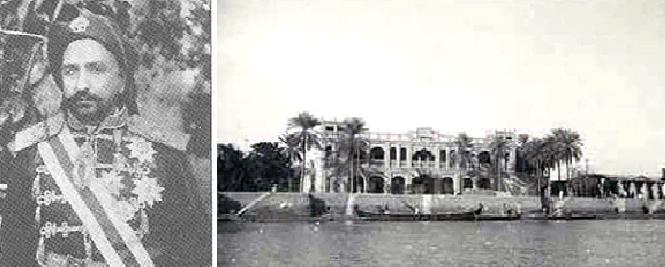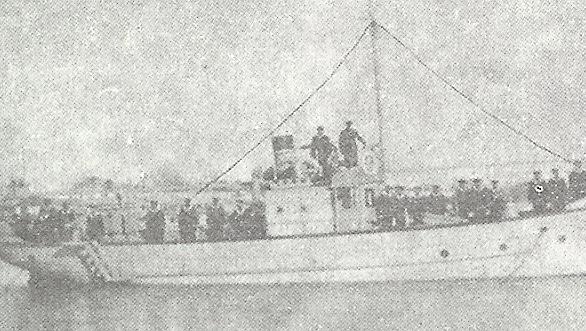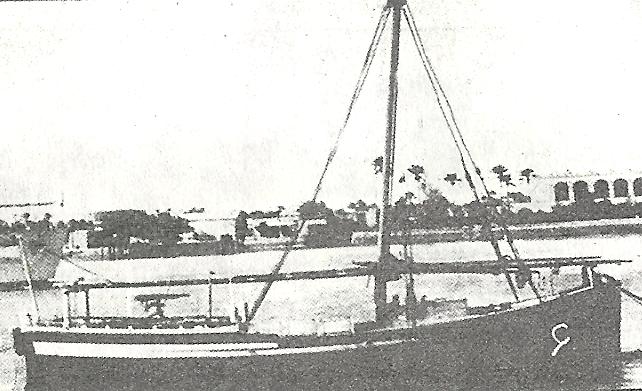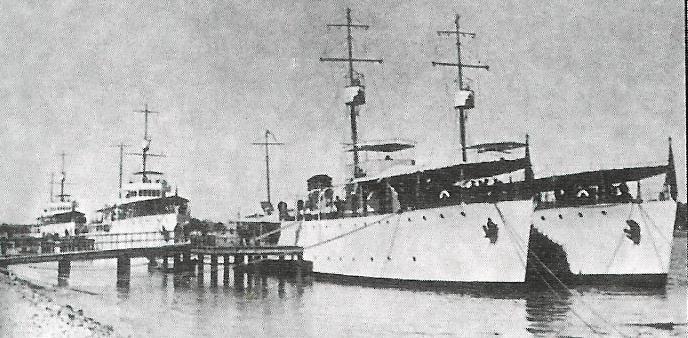The content of the article below on the history of the Iranian navy from 1921 to 1961 is derived from Iran at War: 1500-1988-(ایران در جنگ (۱۹۸۸-۱۵۰۰– The photographs are mainly derived from the Photo archives of Mehdi Farrokh, Fouman.com and Babaie. Kavehfarrokh.com will continue to produce more articles on the history and evolution of the Iranian navy.
= = = = = = = = = = = = = = = = = = = = = = = = = = = = = = = = = = = = = = = = = = = = = = = =
In 1921 the Persepolis and Shoush from the Nasser e Din Shah era were finally decommissioned. Only the four vessels acquired by Ahmad Shah (last Qajar monarch) remained to be officially formed as the nucleus of the new Iranian navy by 1923. The only “naval” operation in the Persian Gulf was that of a small naval ship, the Khuzestan which was originally a British craft in World War One. The British then handed the vessel to Iran after they removing its heavy cannon (unknown calibre).
The Khuzestan carried 60 soldiers along the Karun River between Khorramshahar and Ahvaz to support the operations of the army in 1924 against Sheikh Khazal. [Left] Sheikh Khazal of Khuzestan, circa 1920. Khazal had strong ties to the British but this failed to rescue him from the arrival of Reza Shah’s forces into Khuzestan (Picture Source: Photo Archives of Mehdi Farrokh) (Right) Sheikh Khazal’s palace in Khuzestan along the Shatt al Arab waterway. Khazal amassed considerable wealth by collecting taxes from the local Arab and non-Arab urban and tribal populations of Khuzestan. As noted by Price, Khazal’s rise in Khuzestan had been facilitated by “an … isolated population, a weak central government, and British support” (Price, M., Iran’s Diverse Peoples: A Reference Sourcebook. Santa Barbara, California: ABC-CLIO, 2005, pp.160) (Picture Source: Fouman.com). After the fall of Sheikh Khazal, three of the latter’s ships were appropriated by the armed forces. One of these was re-Christened as the Homa (able to carry 1000 troops) and was capable of operating as far as the Indian Ocean; the other two were contracted to American naval engineers for repairs. In April 1925, Iran took delivery of its first German built minesweeper (weight at 141 tons). The Iranian navy however remained inadequate at disrupting piracy and smuggling along Iran’s coastline prompting the Tehran Majlis to legislate the buildup of the Iranian navy on March 20, 1928. This entailed working alongside Italian naval advisors to appropriate ships suitable for Iran’s naval needs. Italian naval advisors were in Iran from 1928-1933. The Italian naval advisors stayed in Iran until 1935. The first cadre of European trained naval officers arrived from Italy in 1933 and gradually the navy acquired Italian-built ships (two ships of 950 tons each, four ships at 330 tons, three smaller craft at 75 tons). These were named as the Gilan, Mazandaran and Azarbaijan (each armed with a 75mm cannon. Iranian naval ships at the eve of the Anglo-Soviet invasion. The Babr (above at left) was shelled by the HMAS Yarra on August 25. Hassan Milanian, the captain of the Palang, had extended an invitation to his British Commonwealth counterpart to visit his vessel a day before hostilities began on August 24 Picture Source TOP: Babaie, 2005a, pp.435.. Babaie, A. (2005). Tarikh e Artesh e Iran [The History of the Iranian Army]. Tehran: Iman Publications). The Caspian Sea witnessed a diminutive “navy” of s single ship, the Sefid-Rood, landing a contingent of 61 Rashti infantry on the Gorgan coast to raid rebel Turkmens in March 1925. When the ship returned to Bandar Anzali it was renamed as the “Nahang”. 
 The original Palang (Leopard) manned by a crew of 70 men. This vessel had no significant armaments at first, thereby being used exclusively for the transportation of supplies. The vessel was later installed with armaments prior to World War Two (Photo Archives of Mehdi Farrokh).
The original Palang (Leopard) manned by a crew of 70 men. This vessel had no significant armaments at first, thereby being used exclusively for the transportation of supplies. The vessel was later installed with armaments prior to World War Two (Photo Archives of Mehdi Farrokh).





